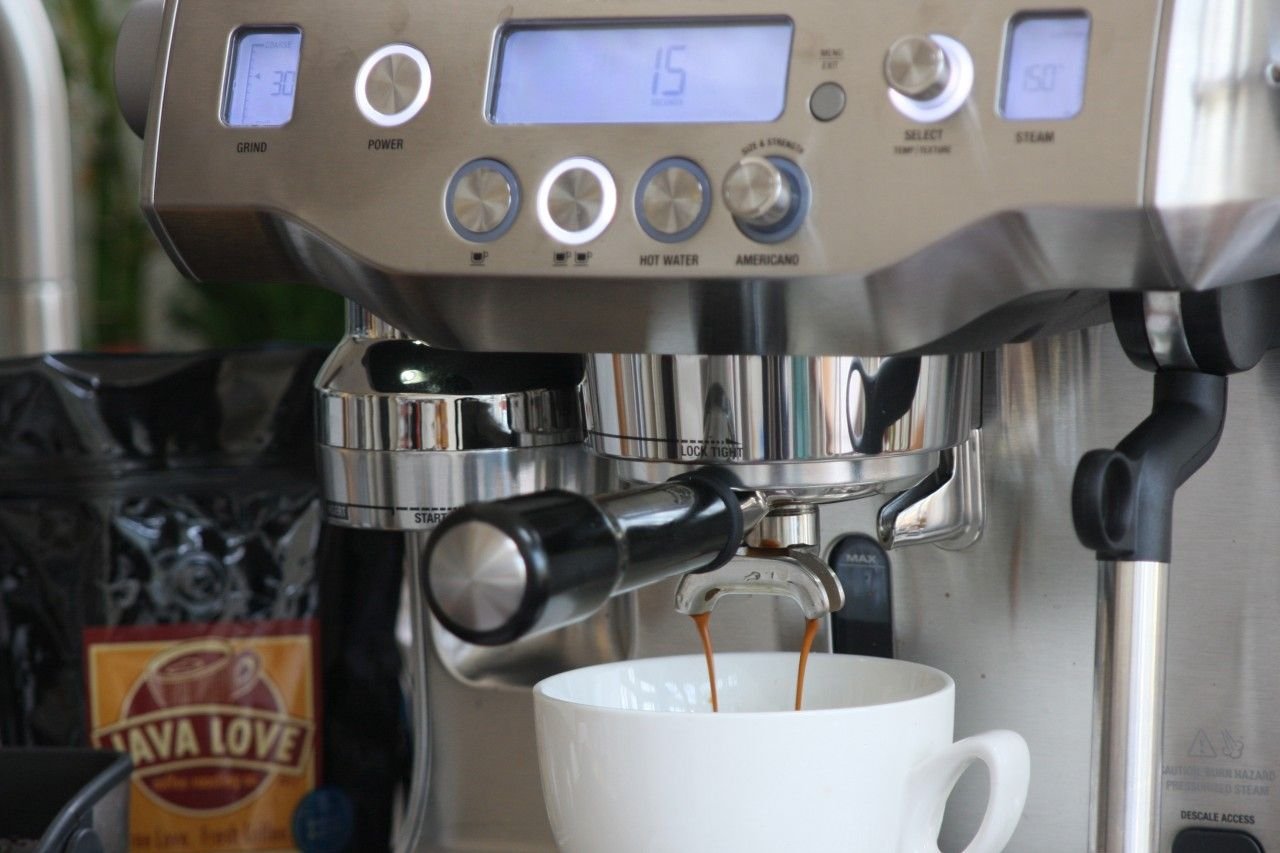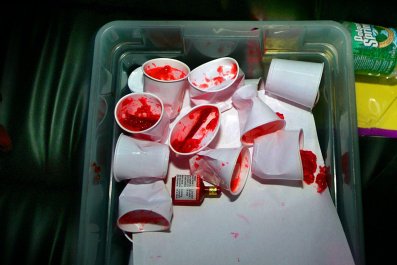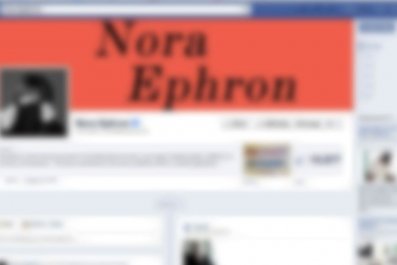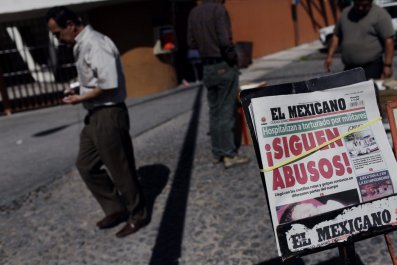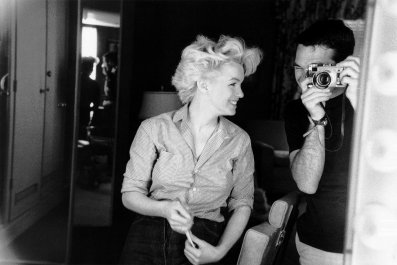Shortly after I started testing The Oracle, Breville's $2,000 semiprofessional, luxury espresso machine, I stopped at a local café to buy some freshly roasted espresso beans.
The beans I had at home were turning out bitter, angry little cups of espresso and I was quickly losing faith in The Oracle and her predictions of hazelnut-colored coffee with a perfect crema - that creamy, Guinness-worthy head you find on a proper espresso. In my haste to see The Oracle in action I had ignored what the manual repeatedly states: Fresh beans are everything.
Which was what brought me to Java Love Roasting Company, a New Jersey café with a vaguely Rastafarian name that serves one of the best lattes this side of Roma.
I told the kindly barista I was testing a home espresso maker that could make coffee just like his Rancilio, a $6,000 behemoth that churned out hundreds of cups of coffee a week, and I needed magic beans. He looked at me with pity and waved his hand in the direction of the house espresso blend. As I paid, he remarked offhandedly that he couldn't believe a home machine could produce anything worthy of a professionally pulled cup of espresso. He added that he'd worked at the cafe for eight months and they were constantly tinkering with the coarseness of bean grind, seeking perfection with near religious devotion. How could I do that at home?
Finding the right coarseness was key, I conceded to him, but The Oracle, with its conical burr grinder (preferred over a blade grinder for the consistency of grind) has 45 settings to choose from. He nodded approvingly - but knew there was more to the perfect cup of joe. "At home, you'll never get the tamping right," he said, ominously.
He stared at me a little too intently when I told him my machine automatically tamped to the correct pressure. This wasn't a throwdown: As any dedicated coffee enthusiast will tell you, manually ensuring a dense basket of coffee grounds (the puck, if you will), takes a lot of practice. The Oracle grinds the beans, measures it into the porta-filter and compacts it precisely.
He listened, rather like a doctor when a patient explains how he has just diagnosed himself using WebMD, as I told him what I knew about the machine from the manual. Had I mentioned the milk steaming wand, the only one on the market that makes "micro-foam" - tiny little bubbles of milk - a skill that takes a good barista years to master? I could set the temperature and texture of my milk - from frothy cappuccino to small-bubbled latte and anywhere in between. I told him the dual boilers ensure a consistent temperature, just like his professional machine, which meant it can do what normal (cheaper) single-boiler coffee makers can't: The Oracle can brew espresso and then steam milk without delay.
Then, feeling a bit like an awkward cougar, I invited him to my house to see it. (I suppose "Come up and see my frothing wand" could be misinterpreted.) Maybe it was my daughter standing there, or maybe he was just afraid, but he suggested I bring it into the café to show him. But then I realized I had just sold myself and him - a genuine barista - on the machine. Suddenly I needed to go home and see if it were all true. So I grabbed my coffee beans (and an exceptionally good chocolate chip scone) and quickly left.
The magic beans worked like - magic. Ground to medium coarseness, the espresso flowed from the machine "like warm honey," just as promised. With a flick of the automatic steam lever I frothed my milk to 150 degrees and a few moments later, a first-rate latte was mine. Even cleanup was automated, by which I mean, I wasn't required to do much. Wipe the steam nozzle with a wet cloth, release it back to its resting position and it automatically expels steam from the head. No cheesy gunk is going to jam up this steam wand.
The machine suits the espresso lover who knows great coffee when she drinks it and wants a professional-quality cup of coffee for little work - and doesn't mind the price tag. The self-proclaimed home barista can tweak to his exacting specifications every detail, from tamping pressure to controlling the pre-infusion phase (which, as I'm sure you know, slowly increases steam pressure on the coffee grounds in order to ensure even extraction). Whether you decide to drive this baby as an automatic and just let the coffee happen to you, or go manual and customize your cup, you'll find yourself with a world-class demitasse of espresso - which at this price seems the least you could ask for.
This is not a machine for the person satisfied with Nespresso. This is for the caffeinated crazies, a cult I would join if I could afford to. (In the interest of full disclosure, and not to make myself appear any more pathetic, Breville lent me The Oracle for review purposes. By the time you read this I'll be packing it up and wishing it a tearful "Ciao, bella.") These are people who believe that to get a consistent shot-making machine you need to pay the big bucks. At $2,000, the Breville seems outrageously expensive, but it's not the most expensive espresso maker in its category. And while I can't believe I'm defending the price tag (and I don't want to know how many refugee children could be drinking macchiati for that price), I must also note that The Oracle is the only machine out there that handles every part of the process - from grinding the beans to proper tamping to controlling water pressure - automatically and reliably. It's a little like having a personal barista in your kitchen. It's up to you if you want to complete the experience and dress up in a plaid flannel shirt and saggy wool hat.



